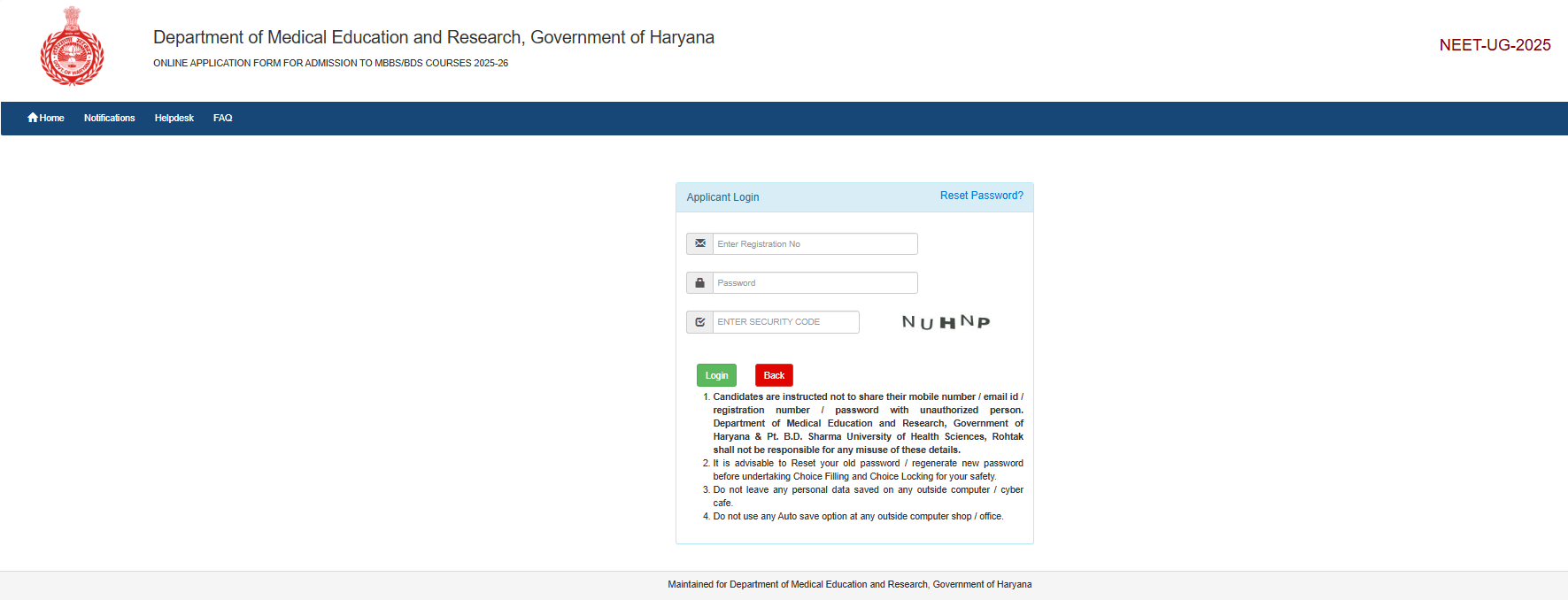Congress ecosystem’s sinister fantasy of Nepal-style violence in India: A desperate bid to import chaos and anarchy to revive its fading fortunes
When history looks back at the decades following India’s independence, one of the most remarkable features of our national journey will be that despite our immense diversity, our frequent political turbulence, and our periodic bursts of social unrest, India has managed to remain a democracy that resolves its contradictions through the ballot box, not the bullet. Unlike our neighbours Pakistan, Nepal, Sri Lanka, Myanmar, or Bangladesh, India has, against all odds, consciously resisted the path of violent insurrections. We have faced wars, insurgencies, terrorism, and ideological extremism, but we have never allowed democratic transfer of power to be undermined by mob violence or street revolutions. It is against this backdrop that the recent moves by the Congress ecosystem, a cocktail of party leaders, social media trolls, partisan journalists, and ideological sympathisers, appear deeply sinister. Having failed to dethrone Prime Minister Narendra Modi in three consecutive Lok Sabha elections (2014, 2019, 2024), and having exhausted the vocabulary of electoral jibes like “Suit Boot ki Sarkar” or “Chowkidar Chor Hai”, Congress now seems to be experimenting with a dangerous, reckless strategy: instigating Indian youth to take up violent protest on the lines of Nepal’s “revolutionary” movements. This is not mere rhetoric. It is an effort to inflame resentment, encourage lawlessness, and potentially push India onto the path of civil war. Nepal’s Tragic Example: From Protest to Inferno The glorification of Nepal’s Gen Z protests by Congress ecosystem warriors is not some harmless social media fantasy. Nepal is currently reeling under one of its deadliest political crises in decades. Prime Minister KP Sharma Oli was forced to resign after violent protests left 19 young demonstrators dead in brutal clashes. What began as an agitation against corruption quickly descended into unrestrained mob violence. Oli’s Bhaktapur residence was set ablaze, the homes of former prime ministers Pushpa Kamal Dahal “Prachanda” and Sher Bahadur Deuba vandalised, and several ministers were hounded out of office. Protesters stormed the residence of Foreign Minister Arzu Rana Deuba, wife of Sher Bahadur Deuba, physically attacking both in their own home. The violence claimed more lives, 17 killed in Kathmandu, two in Sunsari, and left the capital engulfed in chaos. Mobs set fire to Nepal’s parliament, Kathmandu’s iconic Hilton Hotel, and several government complexes, including the Singha Darbar, which houses Nepal’s administrative offices. Even the ancient Pashupatinath Temple had to be protected by the Nepalese Army after hooligans attempted to storm it. The wife of former Prime Minister Jhalanath Khanal tragically succumbed to burn injuries after their residence was torched. Ministers were chased through the streets, beaten, and threatened, while Oli himself went into hiding. The army had to take over, enforcing curfews and attempting to restore a semblance of order. Amidst this anarchy, Nepal’s so-called youth revolutionaries have already split, with some distancing themselves from the arson and destruction. But the damage is done: the Himalayan nation has been pushed into turmoil, its economy devastated, and its political system teetering on collapse. The emergence of rapper-turned-politician Balen Shah and NGO-founder Sudan Gurung as potential successors highlights the vacuum, and the dangers of mob-fuelled politics. This is the “model” some Congress sympathisers and trolls are glorifying for India. From electoral failure to dangerous instigation It is a truth universally acknowledged that the Congress party has been unable to reconcile itself with Modi’s repeated electoral victories. Despite enormous media backing, a vast network of NGOs, international commentary sympathetic to its cause, and an entrenched dynastic leadership, the party has seen its base shrink. Each electoral setback has pushed the party not towards reform or reinvention but towards greater bitterness. The latest symptom of this desperation is the open flirtation with revolutionary language. When Congress spokesperson Supriya Shrinate shared a video on X captioned “Their Kids vs Your Kids”, the intent was clear. The video contrasted images of BJP leaders’ children, portrayed as living privileged lives, with visuals of protesting youth being lathi-charged by the police, captioned “Your Kids”. The design of this propaganda was not subtle; it was crafted to evoke anger, jealousy, and a sense of injustice, pushing young Indians to think that violent rebellion is the only path available. The video was amplified on social media by several Congress leaders and loyal supporters alike. Their Kids Vs Your Kids pic.twitter.com/J4I5hIW5Ge— Supriya Shrinate (@SupriyaShrinate) September 13, 2025 This was not an isolated episode. Rahul Gandhi’s favourite online troll, Arpit Sharma, has been called out for glorifying violent protests in N



When history looks back at the decades following India’s independence, one of the most remarkable features of our national journey will be that despite our immense diversity, our frequent political turbulence, and our periodic bursts of social unrest, India has managed to remain a democracy that resolves its contradictions through the ballot box, not the bullet. Unlike our neighbours Pakistan, Nepal, Sri Lanka, Myanmar, or Bangladesh, India has, against all odds, consciously resisted the path of violent insurrections. We have faced wars, insurgencies, terrorism, and ideological extremism, but we have never allowed democratic transfer of power to be undermined by mob violence or street revolutions.
It is against this backdrop that the recent moves by the Congress ecosystem, a cocktail of party leaders, social media trolls, partisan journalists, and ideological sympathisers, appear deeply sinister. Having failed to dethrone Prime Minister Narendra Modi in three consecutive Lok Sabha elections (2014, 2019, 2024), and having exhausted the vocabulary of electoral jibes like “Suit Boot ki Sarkar” or “Chowkidar Chor Hai”, Congress now seems to be experimenting with a dangerous, reckless strategy: instigating Indian youth to take up violent protest on the lines of Nepal’s “revolutionary” movements. This is not mere rhetoric. It is an effort to inflame resentment, encourage lawlessness, and potentially push India onto the path of civil war.
Nepal’s Tragic Example: From Protest to Inferno
The glorification of Nepal’s Gen Z protests by Congress ecosystem warriors is not some harmless social media fantasy. Nepal is currently reeling under one of its deadliest political crises in decades. Prime Minister KP Sharma Oli was forced to resign after violent protests left 19 young demonstrators dead in brutal clashes. What began as an agitation against corruption quickly descended into unrestrained mob violence.
Oli’s Bhaktapur residence was set ablaze, the homes of former prime ministers Pushpa Kamal Dahal “Prachanda” and Sher Bahadur Deuba vandalised, and several ministers were hounded out of office. Protesters stormed the residence of Foreign Minister Arzu Rana Deuba, wife of Sher Bahadur Deuba, physically attacking both in their own home. The violence claimed more lives, 17 killed in Kathmandu, two in Sunsari, and left the capital engulfed in chaos.
Mobs set fire to Nepal’s parliament, Kathmandu’s iconic Hilton Hotel, and several government complexes, including the Singha Darbar, which houses Nepal’s administrative offices. Even the ancient Pashupatinath Temple had to be protected by the Nepalese Army after hooligans attempted to storm it. The wife of former Prime Minister Jhalanath Khanal tragically succumbed to burn injuries after their residence was torched. Ministers were chased through the streets, beaten, and threatened, while Oli himself went into hiding. The army had to take over, enforcing curfews and attempting to restore a semblance of order.
Amidst this anarchy, Nepal’s so-called youth revolutionaries have already split, with some distancing themselves from the arson and destruction. But the damage is done: the Himalayan nation has been pushed into turmoil, its economy devastated, and its political system teetering on collapse. The emergence of rapper-turned-politician Balen Shah and NGO-founder Sudan Gurung as potential successors highlights the vacuum, and the dangers of mob-fuelled politics.
This is the “model” some Congress sympathisers and trolls are glorifying for India.
From electoral failure to dangerous instigation
It is a truth universally acknowledged that the Congress party has been unable to reconcile itself with Modi’s repeated electoral victories. Despite enormous media backing, a vast network of NGOs, international commentary sympathetic to its cause, and an entrenched dynastic leadership, the party has seen its base shrink. Each electoral setback has pushed the party not towards reform or reinvention but towards greater bitterness.
The latest symptom of this desperation is the open flirtation with revolutionary language. When Congress spokesperson Supriya Shrinate shared a video on X captioned “Their Kids vs Your Kids”, the intent was clear. The video contrasted images of BJP leaders’ children, portrayed as living privileged lives, with visuals of protesting youth being lathi-charged by the police, captioned “Your Kids”.
The design of this propaganda was not subtle; it was crafted to evoke anger, jealousy, and a sense of injustice, pushing young Indians to think that violent rebellion is the only path available. The video was amplified on social media by several Congress leaders and loyal supporters alike.
Their Kids
— Supriya Shrinate (@SupriyaShrinate) September 13, 2025
Vs
Your Kids pic.twitter.com/J4I5hIW5Ge
This was not an isolated episode. Rahul Gandhi’s favourite online troll, Arpit Sharma, has been called out for glorifying violent protests in Nepal and encouraging Indians to imitate them. Arpit Sharma, a popular Congress troll, posted a video on X, heaping praises on the ‘courageous’ young Nepali protestors who marched through the streets of Nepal, vandalising and destroying anything and everything that came in their way.
A starry-eyed Sharma hailed the Nepalese Gen Z for raising their voice against the corruption in their country. However, he lamented that the Indian youth were not courageous enough to organise similar violent demonstrations against the Indian government.
In the video, Sharma went on to suggest ideas, including Congress leader Rahul Gandhi’s Vote Chori lie, to the Indian youth to organise Nepal-like violent demonstrations in India. He claimed that 60 crore young voters in India can come together and shake the “power structure” in the country. Sharma’s father, Vikas Sharma, contested the 2022 Uttar Pradesh Assembly Elections on the ticket of AAP. However, he lost the election.
Sharma subsequently deleted the tweet following massive online backlash. But it nevertheless demonstrates how Congress ecosystem warriors have been hankering for violence just because their favourite leader has repeatedly failed electorally in his bid to reach the highest office of the land.
Another prominent troll, @thepeeinghuman, went so far as to suggest “monitoring” the offsprings of Indian politicians — effectively an open call to paint targets on the backs of people whose only ‘fault’ is that their parents belong to a party the troll despises.
Should we start monitoring nepo politician kids of India?
— Official PeeingHuman (@thepeeinghuman) September 13, 2025
Still another influencer, @ms_medusssa, rationalised violence as an inevitable outcome of “systems where justice is inaccessible,” during a video chat with ex-Newslaundry ‘journalist’ Meghnad. When social media handles with significant influence begin to justify violence as natural or necessary, they are not engaging in debate; they are planting landmines in India’s democratic soil.
People should see the dangerous stuff on Indian liberal Youtube ecosystem
— Abhishek (@AbhishBanerj) September 12, 2025
Here they are discussing Nepal
And they are openly saying there can be no such thing as "bloodless revolution"
It is almost certain that these people want violence… pic.twitter.com/KLgwYCnMFo
The hypocrisy on nepotism
The most galling aspect of this campaign is the naked hypocrisy. The Congress ecosystem pretends to be outraged about the “privilege” enjoyed by children of BJP leaders, while maintaining a studied silence on Rahul Gandhi’s dynastic entitlement. Rahul Gandhi is a fifth-generation dynast: From Motilal Nehru, Jawaharlal Nehru, Indira Gandhi, and followed by Rajiv Gandhi — at least four generations before Rahul Gandhi were actively involved in shaping India’s politics in profound manner. No other party in the democratic world clings so desperately to hereditary leadership, and yet Congress supporters do not dare to question this.
Contrast this with the BJP’s leadership, most of whom, including Narendra Modi himself, rose from humble beginnings. Modi was once a tea seller at a railway station; Amit Shah was a booth-level worker in the Jan Sangh-BJP tradition; Nitin Gadkari, Rajnath Singh, Shivraj Singh Chouhan, all come from ordinary families. Their children may or may not pursue politics, but their political authority is not inherited, it was earned through decades of ground-level struggle. To compare their children’s relative privilege with the masses while ignoring the Gandhi family’s dynastic entitlement is not just dishonest; it is malicious propaganda designed to inflame resentment, anger, and bitterness among people.
Why this is dangerous for India
The reason this strategy is so perilous is not just its dishonesty, but its potential to unravel India’s hard-won stability. The instigation of violent uprisings has consequences far beyond one election cycle. India is today the world’s fastest-growing major economy, a hub of digital innovation, and a leading voice of the Global South. But all of this progress rests on a bedrock of political stability. Investors, industries, entrepreneurs, and global powers trust India because it has shown that, despite noisy democracy and regular political change, it does not descend into chaos.
If the Congress ecosystem succeeds even partially in planting the idea that violent street revolution is a legitimate path to political change, the risks for India are immense. The first and most immediate danger is economic derailment. Investor confidence is notoriously fragile in the face of instability. India’s booming stock market, its steady flow of foreign direct investment, and the momentum behind its manufacturing drive could all collapse if the spectre of mob violence were to dominate headlines. We have already seen how political chaos and street protests triggered an economic freefall in Sri Lanka, and how years of insurgency in Nepal destroyed decades of developmental progress.
The second risk is civil strife. India is home to extraordinary diversity: linguistic, regional, religious, and caste-based. And, it has so far managed to hold this complex mosaic together through democracy and constitutional methods of dispute resolution. But if violent methods were to be normalised, these very fault lines could erupt into a patchwork of civil conflicts. Each grievance group might feel emboldened to justify violence as a tool for its cause, leading to an endless cycle of insurgencies that could make governance nearly impossible.
A third and equally grave danger lies in the precedent set by our region. Every neighbouring country offers a cautionary tale. Pakistan’s repeated coups and jihadist uprisings have kept it perpetually unstable. Nepal’s Maoist revolution, which Congress sympathisers today romanticise, led to years of bloodshed and left the economy permanently scarred. Sri Lanka’s civil war, Myanmar’s military crackdowns, and Bangladesh’s violent street politics all demonstrate how rebellion can set a nation back by decades. India has consciously avoided this trap so far. To now import such a virus would be nothing short of national suicide.
Finally, there is the tragedy of generational loss. India’s youth today have unprecedented opportunities at their fingertips. From startups and global careers to digital platforms and expanding higher education, millions of young Indians are being empowered to dream bigger than ever before. But if the Congress ecosystem succeeds in redirecting this immense energy into street battles and violent confrontations, the result would be catastrophic. An entire generation’s future would be wasted in destruction rather than creation, tearing down what they should instead be building.
The calculated silence on Rahul Gandhi
The hypocrisy comes into full view when we notice what is left unsaid. If Congress-supporting voices are truly outraged about dynastic privilege, why is there no outrage over Rahul Gandhi? Why is there no campaign against Priyanka Gandhi Vadra’s dynastic entitlement? Why no mention of the countless Congress MPs, MLAs, and state leaders whose only credential is their parentage?
The truth is that this outrage is not principled but weaponised. “Nepotism” is only condemned when it can be used to provoke anger against BJP leaders. When the exact same phenomenon exists in the Congress fold, it is celebrated as “continuity of legacy.” The aim is not to reform Indian politics, but to destabilise India’s polity.
The long shadow of insurrection
History teaches us that once the genie of violent politics is unleashed, it is nearly impossible to put it back in the bottle. Nepal’s Maoist revolution, celebrated by some Congress supporters today, did not lead to a utopia of justice; it led to decades of killings, instability, and economic stagnation. Pakistan’s repeated flirtations with jihadist violence have left its society fractured and its state perpetually on the brink. Sri Lanka’s civil war took 30 years and countless lives to extinguish. Myanmar is today a humanitarian catastrophe. Bangladesh, too, has seen cycles of violent protests that stunted its democratic development.
India’s miracle has been to avoid this path despite far greater diversity and fault lines. Our democratic culture, our faith in elections, and our ability to resolve disputes through constitutional means have ensured stability. If Congress now tries to erode this culture by instigating youth towards violent confrontation, it will not be Modi who suffers. It will be India itself; its youth, its economy, its unity.
A dangerous gamble with India’s future
At its core, the Congress ecosystem’s flirtation with violent rhetoric is an admission of defeat. Having failed to convince Indian voters electorally, it now dreams of revolution by chaos. But the costs of this gamble are catastrophic. It threatens to derail India’s economic rise, fracture its social fabric, and plunge it into the same cycle of instability that has crippled its neighbours.
India is too big, too diverse, and too important to be sacrificed at the altar of dynastic desperation. The Congress ecosystem must be held accountable for its reckless instigation, its selective outrage, and its silence on its own hypocrisies. The Indian people have repeatedly chosen democracy, progress, and stability. They will not allow a bitter, dynastic party and its ecosystem of trolls to drag them into the abyss of civil war.
The choice before India is clear: stay the course of growth and democratic stability, or surrender to the chaos that Congress seems to romanticise. The people have spoken thrice at the ballot box. It is time Congress heard them or risk being remembered not as a party of governance, but as a party that once dreamt of plunging the country into blood.




















































































































